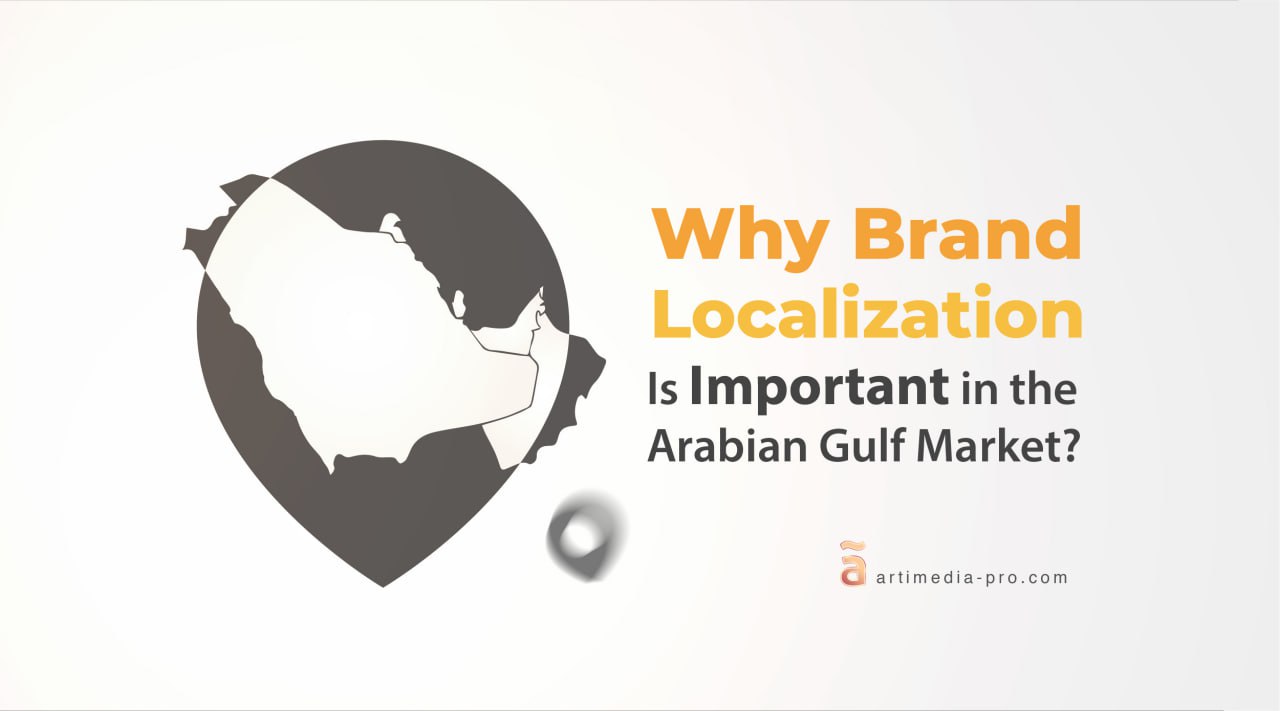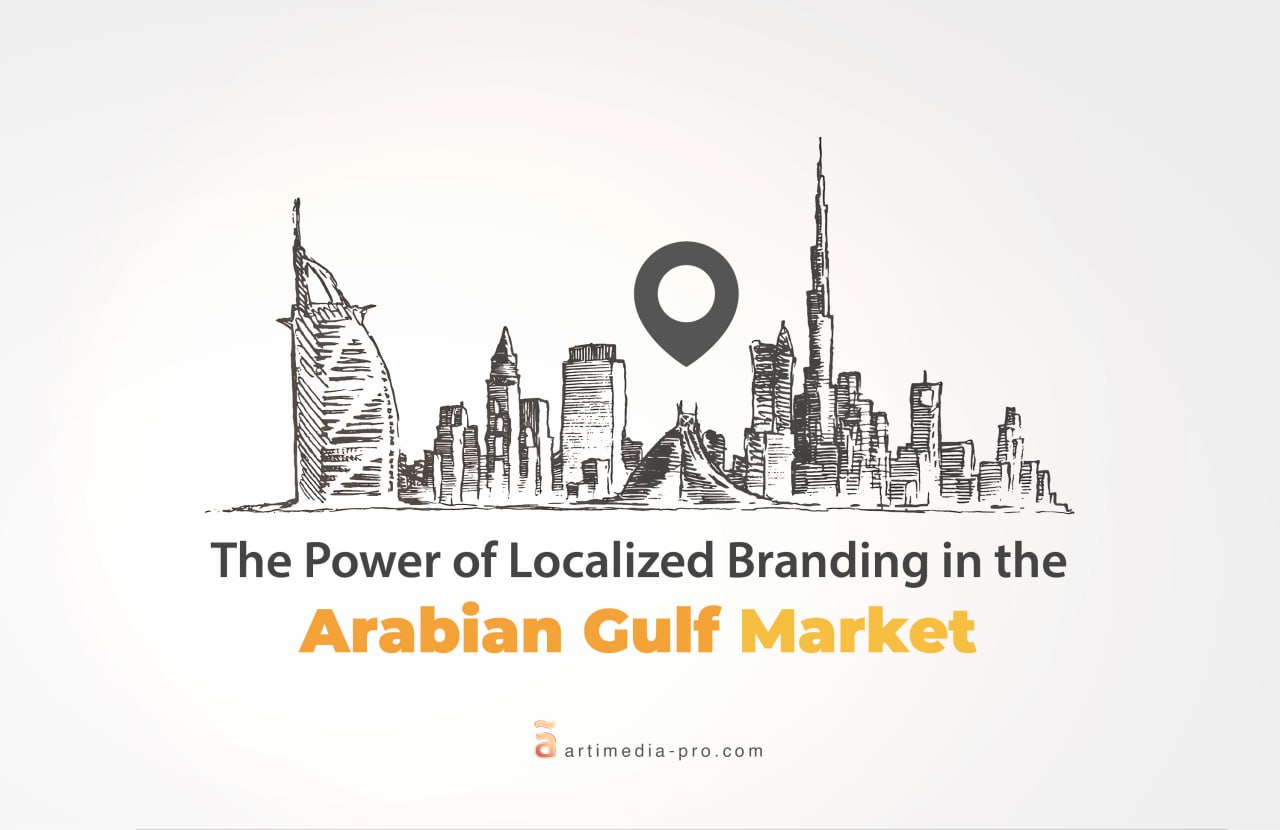When talking about a digital marketing strategy for a brand, then we must talk about its consistency and stable identity in all aspects, however, localized branding in the Arabian Gulf market, or any other market, is a must to reach your targeted audience effectively.
For that reason, and many more, all digital marketing services are adopting localized branding, yet, in a way that protects and consists of the original brand identity.
Moreover, you will need to change the tone of voice, language, and even your brand tagline, however, you must stay within your brand values, vision, mission, and objectives to protect the essence of your brand.
In this blog post we are going to identify the localized branding concept for you, tell you why it is important, share effective localization brand steps with mistakes to avoid, and study popular localized branding in the Arabian Gulf market examples with you.
What Is Localized Branding in the Arabian Gulf Market?
Localized branding in the Arabian Gulf market refers to the adaptation of a brand’s communication, marketing strategy, messaging, and visuals to meet the specific needs and expectations of a GCC area audience in that location.
It involves developing digital branding strategies, based on specific key performance indicators, that resonate with consumers in the targeted area according to their language, cultural preferences, purchase behavior, socioeconomic factors, and other demographics.
With a goal to create a consistent brand identity, and boost brand awareness and exposure while highlighting regional uniqueness factors that will appeal to a particular subset of customers, drive sales and build loyalty.

Why Brand Localization Is Important in the Arabian Gulf Market?
Localization of branding in the Arabian Gulf market has several benefits that will help your brand amazingly, including:
· Increased Brand Visibility:
A localized branding strategy in the GCC area can help establish a brand’s presence and increase visibility in that specific region or market.
· Greater Relevance:
When a brand understands and responds to cultural and local-specific features of a target market, it becomes closer and more relevant to consumers.
Which will boost customer loyalty, increase sales, and generate more revenue.
· Adaptable Approach:
By tailoring marketing strategies and content, brands can meet customer expectations and demands for different locations, languages, and buying habits resulting in higher levels of customer retention and loyalty.
· Enhanced Trust:
Creating a comfortable, trusted bond with your customers will push them faster through your digital marketing funnel.
Thus, this is considered a competitive advantage, that encourages brands to work towards localized aspects to produce stronger acquisition approaches facilitating over-international competitors who fall into the mistake of neglecting localization.
· Greater ROI:
Enjoying a greater return on investment is something all businesses aim for, and specific optimization to match demonstrated metrics and marketing leads will help you meet the unique customer character, and guarantee great value for businesses.
How to Localize Branding in the Arabian Gulf Market?
Now, if you are interested in localized branding in the Arabian Gulf market and want to implement it in your digital brand strategy, then these are the most important steps that you need to follow:
· Market Research:
Conducting deep market research is a significant criterion for creating a localized brand in the Arabian Gulf market.
As brands must perform thorough research about the demographics and behavior patterns of their target audience.
Additionally, it is essential to examine the region’s cultural, economic, and political landscape to develop a digital marketing strategy for their products or services that parallel accurately their requirements.
· Buyer Persona:
Buyer Personas are traditional marketing techniques for knowing specific requirements, desires, behaviors, and beliefs of customers interacting with a company internationally.
However, when dealing with Arab buyers there will be different demographic factors, culture requirements, customary behavior, and preferences in voices tone.
· Hire Locals:
Brands often elect to specific hiring requirements, however, when localize your branding then hiring natives must be a basic recruiting feature.
As they can help your brand to work better, solve conflicts, and understand the local audience better which will help you reach them and achieve your goals faster.
· Localized Marketing Strategy:
You must have a general digital marketing strategy, however, adjusting this strategy and the used storytelling in content marketing strategy is basic to localized branding in the Arabian Gulf market.
You can do so by adjusting your brand tone of voice, language, and content graphics, and by adjusting your strategy based on local occasions, as consumer behavior during Ramadan is not the same at different times, especially in the GCC area.
· Use Paid Ads Campaigns:
Whether we are talking about Facebook ads or Google ads, paid ads will help you to reach your audience at the right time, especially since they are more than effective in the GCC countries.
You can control all the related settings in the paid ads from age, gender, location, and language, to preferences to reach the audiences that actually are interested and will buy from you.
· Adopt the Culture:
Whether in the GCC countries, or any other location in the world, each culture has its specific requirements and features.
Thus, the digital marketing strategy for a brand must differ from country to country in order to reach the people of that country in the best way and achieve more brand exposure and awareness.
Mistakes to Avoid in Localization Digital Marketing Strategy for a Brand:
Among different mistakes in digital marketing, there are more specific mistakes to avoid in order to make your localized branding in the Arabian Gulf market.
· Just Translating:
When localizing your brand, you must work to translate the meaning or the concept of the words not just translate, as every language has its own expressions that make sense for its users, thus avoid literal translation.
· Use Old Data:
When reaching a new market, then you must work to study your market and analyze it based on real-time data.
Thus, invest in data collecting and market studying to make your localized branding effective.
· Portion Localization:
When you localize your brand you must do full localization, not just adjust the used language and keep the same voice of tone or graphic.
This means that you must localize the entire digital marketing strategy not just one part of it, if you really want to reach your targeted audience effectively.
· Losing Brand Consistency:
A big mistake is that many brands failed their localized branding work because of it, as some brands fail to keep their consistency when localizing.
In other words, localization does not mean losing the essence of your brand, but just adjusting it to work with your new market, moreover, this localization must work perfectly with the main guideline of your brand strategy.
Localized Branding in the Arabian Gulf Market Examples:
To make things clearer for you, we are going to explore some real-life examples from the Arabian Gulf market:

· Coca Cola:
One example of Coca-Cola’s localized branding efforts in the GCC was its “Share A Coke” campaign in 2015.
Instead of printing the typical Coca-Cola logo on their bottles and cans, Coke replaced it with popular Arabic nicknames such as Ahlam, Mohamed, Nouf, and many more that resonated with local media personalities and ordinary people alike.
This strategy tapped into the region’s popularity of sharing and the cultural significance of personalized gifts, generating significant buzz and connecting with customers on an emotional level beyond standard company marketing relationships.
· Netflix:
In the GCC region, Netflix has employed many localized branding moves.
On the first hand, Netflix is collaborating with local content producers to create Arab-centric content for its platform.
One example of this is the deal made with Image Nation Abu Dhabi which strategically works specifically on authentic content recognizable to Middle Eastern audiences.
Another example is Netflix showcasing Ma Na’am El- Tabaki, an old Egyptian drama series, using conversational talks commonly understood within multiple Arab contexts.
Through working in partnerships with local talent, Netflix has reduced traditional television networks’ grip on making heavyweight excellent content that only covers Europe standard-wise narrative.
· Starbucks:
Starbucks localized its branding in the GCC countries by integrating traditional Arabic elements into its store design and menu offerings.
In six leading stores across the region, Starbucks added decorative elements such as brass and copper room dividers, lantern-shaped pendants, and Arabesque mosaic walls.
Additionally, the coffee menu featured unique local-inspired drinks such as Rose Cardamom Latte, Arabic Coffee Mocha, Pistachio Mocha, and date powders used in lattes and hot chocolate beverages catering to the taste of residents and visitors in GCC countries.
The localized branding moves aimed to make customers feel a strong cultural connection with Starbucks and be introduced to the company’s brand by blending it pleasantly with local practices to attract a customer base.
To sum up,
Localized branding in the Arabian Gulf market is a must to succeed due to the region-specific culture criteria, however, it is not an easy process to go through.
Thus, boost your odds to get ahead of the contest and contact ãrtiMedia Pro today to craft your brand and story in the best way for the GCC area.
